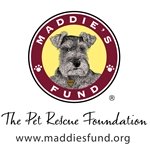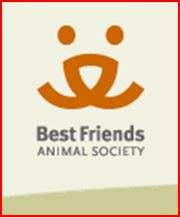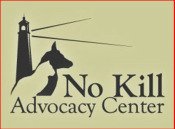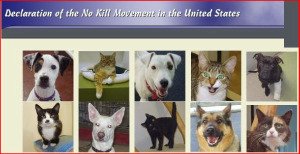|
No Kill SheltersWhen I first looked into no kill shelters, I was unaware of the amount of controversy between them and shelters that euthanized unwanted animals. We adopted our dog Sydney from a no-kill shelter called N.O.A.H. (Northwest Organization for Animal Help), located about an hour north of Seattle, Washington. N.O.A.H. works in collaboration with nearby shelters that are overcrowded, taking in dogs that would otherwise be killed. When I think of a shelter, or the pound, what comes to mind is the cute little faces of the dogs and cats looking mournfully through their cages begging to be taken home, left there by a family that no longer wants them. A visit there leaves me feeling sad for all the animals that will never find a home. I want to take all of them, and I'm sure all animal lovers feel the same. So many of the animals will never find a new home, but instead will be "put to sleep", euthanized, killed. Visiting "no kill" shelters is easier because we know that these animals will be adopted. And isn't that what we all want? So why aren't all shelters no kill? Is it even feasible?

Types of Dog Shelters You will hear various terms when it comes to describing types of shelters, and controversy not only about what term is best, but what type of shelter is best. Many shelters are non-profit and operate strictly on donations and the fees paid when someone adopts one of the animals. Others are funded and run by city or county governments. There are animal rescue groups that do not house animals in a facility, but instead use volunteers to foster the animals until a permanent home is found. Some of these groups are breed specific. Yes, there are purebred dogs available for adoption! No kill shelters keep their animals until a home is found for them. Animal Shelter Terminology
Open door, open access, and open admission all mean the same thing. These shelters take in every animal brought to them. Shelters funded by city and county governments - meaning your tax dollars - are required to accept any animal brought to them, plus they are in charge of picking up strays. The term "no kill" has led to controversy within the animal welfare community as some feel that the term is misleading to the public. People who surrender their dogs to no kill shelters believe that doing so guarantees their dog a new home. However, there are shelters that are considered "no kill" that will kill animals that are too old or too ill to make room for more "adoptable" animals.
The argument against "no kill" shelters
A No Kill Nation The no-kill movement has become prominent in the last two decades and there are those who believe that all shelters should and can be no kill. True animal lovers hope that every dog in every shelter finds a loving forever home. So who could possibly be opposed to no kill shelters? Many argue that those in animal welfare have for too long accepted that most of the animals brought to shelters will not find a new home. "It's a given" seems to be the attitude. Save a few, kill the rest. Is this the type of thinking we want? Are those who believe this the people we want running our shelters? It is generally agreed that only half of the animals brought to shelters are found a new home. That means that four million dogs and cats - most of which are healthy - will be put to death in our nation’s animal shelters every year. No kill, open admission, limited admission, adoptable and treatable, unadoptable and non-rehabilitative; these terms can be confusing and subjective. They mean different things to different people and agencies. Let's take a look.
No Kill Shelters and Agencies
The clinical definition of the term "no kill" means that no animal that can be saved is killed. Following are some of the agencies considered forerunners in the no kill movement: MaxFund, Denver, CO, established in 1988 "A True No Kill Shelter" "There is no pre-sorting of animals into "adoptable" and "non-adoptable" categories, discarding the so-called "unadoptable." The MaxFund takes every animal it has the space for. EVERY animal is kept until its owner is found or it is placed in a new adoptive home. The only reason for euthanasia is when it is in the humane interest of the animal. No animal is discarded to municipal shelters."
Maddies Fund, San Francisco, CA "No More Homeless Pets" "No-kill means saving both adoptable (healthy) and treatable dogs and cats, with euthanasia reserved only for non-rehabilitatable animals. When we reach the point where the nation's healthy, adoptable animals can be guaranteed a home, Maddie's Fund will then focus its resources on funding programs to rehabilitate the sick, injured, and poorly behaved, knowing that when these animals are whole again,there will be a loving home waiting for them."

Best Friends Animal Society

"The most widely accepted definition of a no-kill shelter is a place where all adoptable and treatable animals are saved and where only unadoptable or non-rehabilitatable animals are euthanized."
No Kill Advocacy Center "A No-Kill Nation is Within Our Reach" -Developed "The No Kill Equation" (a proven model in creating a no kill community) According to their website, "the No Kill Advocacy Center is the nation’s first organization dedicated solely to the promotion of a No Kill nation. And it is the only national animal welfare agency that is staffed by people who have actually worked in and created a No Kill community."

Perhaps one of the most well-known individuals in the nation's movement toward no kill is also quite controversial. Nathan Winograd was the creator of the first No Kill community, the Tompkins County (NY) SPCA, where with his leadership, the lifesaving rate increased to over three times the national average. Winograd's philosophy is to save every animal brought to shelters. Winograd believes that the only justification for "euthanasia" is to relieve an animal of suffering, and any other reason is considered "killing." He believes that no kill shelters are indeed feasible and can be done with hard work and innovative strategies including:
Winograd has been criticized for his belief that there is no such thing as animal over population. His critics say he unfairly blames caring shelter workers who hate putting down animals, but are left with no choice as shelters fill with surrendered animals. His critics claim that he has not put the blame where it belongs - on puppy mills, pet stores, and irresponsible breeders that bring numerous litters of unwanted puppies into the world every year. Decreasing the number of animals killed in shelters each year begins with responsible pet owners. Having a pet is a lifetime commitment, and giving up a pet should not be taken lightly.
And as much as I don't espouse more government regulations - we have enough laws that are difficult to enforce already - my hope is that we stop irresponsible breeders by implementing legistlation against them that is particularly punitive. Adopting a dog from a shelter, as opposed to buying from a store will decrease the number of animals put to death, and isn't that what all animal lovers and any compassionate human being wants? And just as importantly,let's hope proponents of both "no kill shelters" and "kill" shelters can find enough common ground to work together toward saving animals. "We can judge the heart of a man by his treatment of animals."
~ Immanuel Kant
Return from No Kill Shelters to Dog Adoption Centers
|







